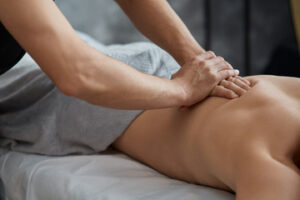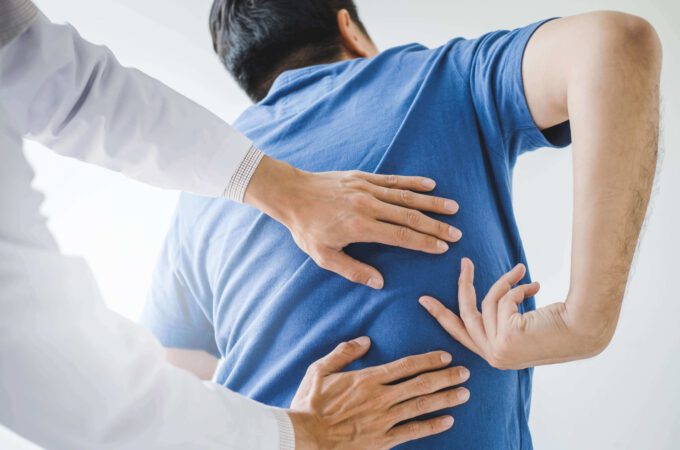Health Benefits of Massage
Massage Tulsa involves manipulation of the soft tissues of the body using hands, fingers, elbows, forearms, feet, or specialized devices. It induces the relaxation response in the nervous system, lowering heart rate and blood pressure while increasing feel-good hormones like oxytocin.
The primary benefits of massage are relief from pain and anxiety. However, many users claim that massage improves flexibility and range of motion and increases energy levels after a massage session.
Massage helps induce the relaxation response, a physical state in which heart rate and breathing slow, blood pressure goes down, muscles relax, and tension is relieved. It increases serotonin levels, a hormone promoting well-being and happiness. Massage is also able to help the body get rid of waste products and reduce congestion of knotted fibers that are a cause of pain.
Relaxation through massage is very beneficial for anyone suffering from stress and anxiety. It can lower blood pressure, reduce gastrointestinal symptoms such as constipation, and increase energy and alertness. It can also help improve immune function and enhance cellular function.
When you receive a massage for relaxation, your practitioner will use techniques that apply light pressure. These include long strokes, gentle kneading of the skin and muscle, and rhythmic rocking from side to side. It is not designed to address specific injuries or problems and is often performed in a spa setting with soothing music playing.
Research has shown that massage increases the number of feel good hormones in the brain, such as endorphins and serotonin. These hormones reduce the cortisol level in the body which decreases the effects of stress and anxiety. The feeling of stress is then replaced with emotions of contentment and happiness, allowing the body to heal itself.
Regular massages may also benefit those who suffer from chronic fatigue syndrome, fibromyalgia, or sprains and strains. It can reduce pain and soreness, ease irritable bowel syndrome, improve posture and flexibility, and aid in healing after surgery.
Before you go for a massage, talk to your therapist about any health concerns or medications you are taking. This will make it easier for them to adjust the pressure applied during the treatment. You should also let them know if you have any discomfort during the massage, such as a sore back or neck. It’s important that you are completely comfortable during the entire treatment. Also, be sure to drink plenty of water before and after the massage. This will help your body to flush out any toxins that are released during the treatment.
Pain Relief
Massage relaxes tight muscles and reduces pain by increasing blood flow to the area, loosening muscle tissues, releasing tension, and removing toxins from the body. It also has many other physiological effects including boosting the immune system and improving circulation, energy and alertness. The most common health benefits of massage include easing stress and anxiety, reducing pain and muscular soreness and tension, lowering blood pressure and heart rate, and alleviating headaches.
Studies have shown that massage can improve range of motion in joints, and relieve the stiffness and pain associated with fibromyalgia. It can also help ease the pain of migraines, neck and shoulder pain and back pain. In addition, a study published in Integrative Cancer Therapies found that massage reduced anxiety and depression in people with breast cancer.
Some research suggests that massage can increase levels of serotonin and dopamine in the brain, which may boost mood. Massage can also increase the parasympathetic nervous system activity, which promotes relaxation and rest. Lastly, massage can stimulate nerve fibers that inhibit the transmission of pain signals in the brain by blocking nociceptors. This is known as the gate-control theory of pain. The concept is that stimulating large nerve fibers that do not send pain messages can overwhelm and inhibit the nociceptors, thereby decreasing pain perception.
Other studies have demonstrated that massage can decrease the level of inflammatory chemicals and stress hormones in the body, which helps to reduce chronic inflammation. Massage can also enhance the immune system, resulting in fewer colds and influenza, by promoting the production of white blood cells that can combat infections.
The nursing community views massage therapy as a valuable tool for enhancing the ability to sleep, manage pain and improve the quality of life for people with fibromyalgia, headaches, cancer pain and other chronic diseases. In a recent qualitative study using grounded theory, participants identified five broad themes that describe the way massage supports healing. The main theme was “massage therapy promotes recovery.” Subthemes included the following:
Better Sleep
Sleep is critical for both mental and physical health, yet many people struggle to get enough quality rest at night. Poor sleep can lead to a variety of issues including weight gain, fatigue and even depression. Fortunately, massage has been shown to help improve sleep.
Studies show that massage reduces levels of cortisol, the stress hormone, and increases serotonin, a mood-enhancing chemical that promotes feelings of happiness and relaxation. Additionally, massage stimulates blood flow to the skin and plumps slack muscles, which can relieve tension that causes pain, contributing to a better night’s sleep.
In fact, a small study published in the Journal of Holistic Nursing showed that women who received a slow-stroke back massage for just 3 minutes slept at least half an hour longer than those who did not receive a massage. This is because a massage helps to calm the nervous system, resulting in a reduced heart rate, relaxed muscle tissue and improved breathing.
It is recommended that patients seek a massage therapy session earlier in the day and not immediately before bed. This allows the body to release melatonin, a sleep-promoting hormone, and relax tight and tense muscles. A calming massage that includes long strokes, kneading and deep circular movements can help to achieve these goals, as well as trigger the release of other sleep-promoting chemicals.
Research has also shown that massage can be effective for insomnia and other sleep disorders, particularly in people with high levels of stress or anxiety. It’s best to work with your GP for any persistent sleep problems, but many experts suggest adding massage to your routine as a natural way to combat insomnia and boost your overall health and wellness.
Incorporate a relaxing massage into your bedtime routine to experience the benefits. Start by rubbing the outside of your big toe, which has an acupressure point that can promote the production of melatonin. Then, focus on a neck and head massage to soothe tired and overworked muscles and ease your mind so that you can enjoy a good night’s rest.
Joint Health
While there are limited scientific studies on the topic, massage seems to provide short term pain relief and improve the flexibility of muscles and joints that are affected by arthritis. It may also relieve swelling in some individuals. Rheumatoid Arthritis is an autoimmune disease that causes inflammation of the joints and soft tissues. It most often affects the wrists, hands and feet but can occur in any joint of the body. Massage can improve circulation to the joints and muscles which decreases inflammation.
In addition to increasing blood flow, it helps reposition and strengthen muscles that have become tight due to inflammation. It can also help with a number of other conditions that can cause musculoskeletal pain including osteoarthritis, myofascial release, and joint mobilization.
Regular therapeutic massage can reduce pain and stiffness and improve mobility in people with osteoarthritis of the knee. It can also reduce the build up of scar tissue which causes stiffness in patients with osteoarthritis of the shoulder.
Various massage techniques are effective in treating arthritis but it is important to discuss with your massage therapist the severity and location of your pain. The more information you give the therapist, the better they will be able to assist you.
Another benefit of massage for arthritis is that it can improve posture. As the muscles relax they can help correct slouching that can lead to additional stress on the joints and increase pain.
It can also help with the underlying cause of arthritis. Rheumatoid arthritis can be caused by an infection in the body and the inflammation that comes with it can damage the joints over time. It is not usually possible to treat the infection itself but massage can ease the pain and discomfort that results from a flare-up of RA.
In general, moderate pressure is recommended for arthritic joints to avoid irritation of the delicate tissues that surround the joint. It is important to communicate with your massage therapist on how much pressure you are comfortable with as different people feel differently. It is also good to drink water after a massage as this will help to prevent dehydration which can exacerbate pain and inflammation.


